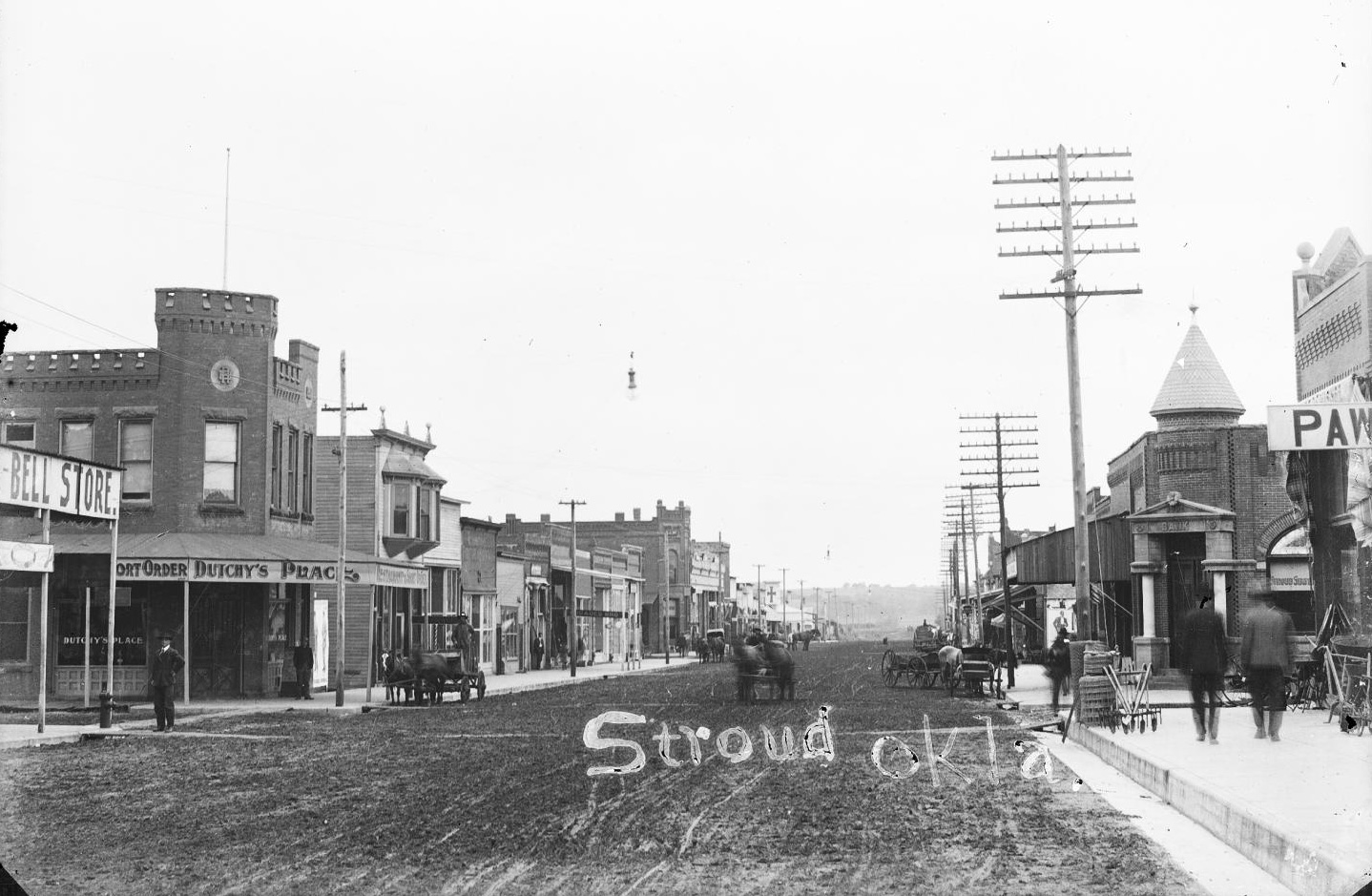
STROUD.
Located in eastern Lincoln County, Stroud is situated at the intersection of State Highways 66 and 99 and one mile south of the midpoint of the Turner Turnpike between Tulsa and Oklahoma City. Stroud originated in 1892 when James W. Stroud built a store and post office on his homestead, located one mile west of the present townsite. A community developed there but soon moved to Stroud's present location in order to be on the route of the Arkansas and Oklahoma Railroad (sold to St. Louis and San Francisco Railway in 1901). The James W. Stroud House is listed in the National Register of Historic Places (NR 84003134).
Prior to 1907 statehood Stroud was one of Oklahoma Territory's notorious "whiskey towns." These were located along the boundary of and generally one mile west of Indian Territory, in which liquor was prohibited. The town's early economy was based on cotton farming in the surrounding area. In 1907 population stood at 1,312. By 1909 Stroud had two banks, two newspapers, four cotton gins, and a cottonseed-oil mill. In 1910 the town had 1,220 residents. On March 27, 1915, the Henry Starr gang simultaneously robbed both banks. Oil created a boom in the 1920s and was an economic force until the 1990s. Early newspapers included the Messenger, the Star, and the Democrat. By 1920 and 1930 the federal censuses reported 1,361 and 1,894 residents, respectively. Population numbers continued to rise with 2,450 counted in 1950 and 2,502 in 1970.
Light industry and trucking have generally provided Stroud's economic base, and Stroud Midway Industrial Park is community-owned. Prior to its destruction in the May 3, 1999, tornado, the Tanger Outlet Mall had employed 350 local citizens. At the end of the twentieth century the town supported three banks, and the Stroud American newspaper informed the citizens. City services included a municipal hospital, a city golf course, a municipal airport, and a public library.
Community activities include an annual, city-wide garage sale in June and a Fourth of July celebration, followed by the nearby Annual Sac and Fox Powwow in early July. Stroud Lake, three miles north and east, offers recreation opportunities and is also the location of the Wilderness Challenge Center of the Oklahoma Foundation for the Disabled. The headquarters of the Sac and Fox Nation is located five miles south of Stroud, and the nation is one of the community's major employers.
At the turn of the twenty-first century Stroud maintained a city manager-council form of government. Population numbers peaked at 3,148 in 1980. The town lost population in the next decade, with 2,666 reported in 1990. In 2000 Stroud had 2,758 residents and in 2010, 2,690. The April 2020 census reported 2,741.






